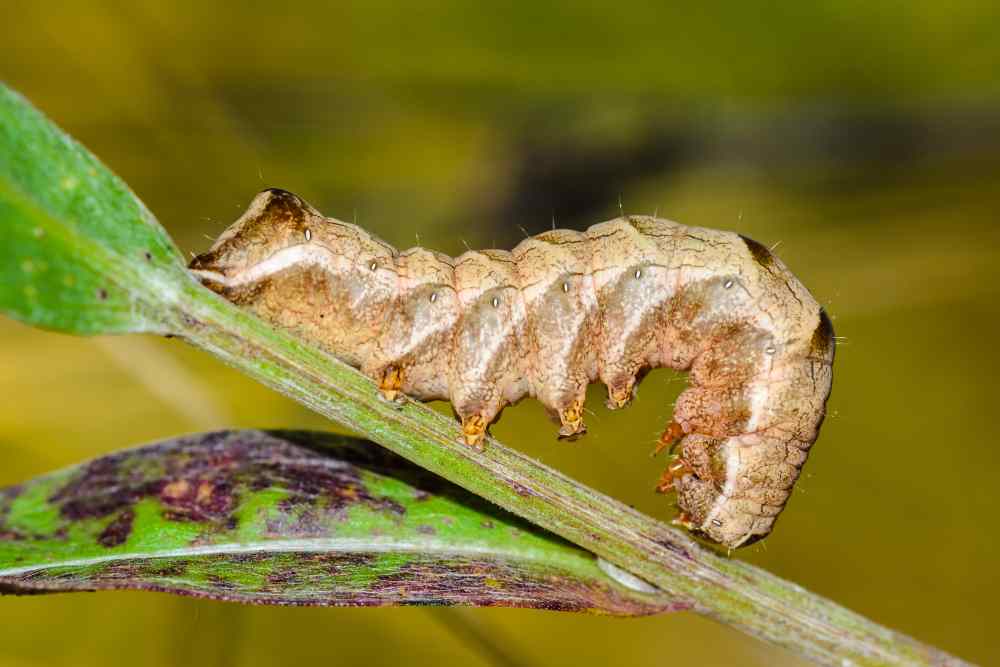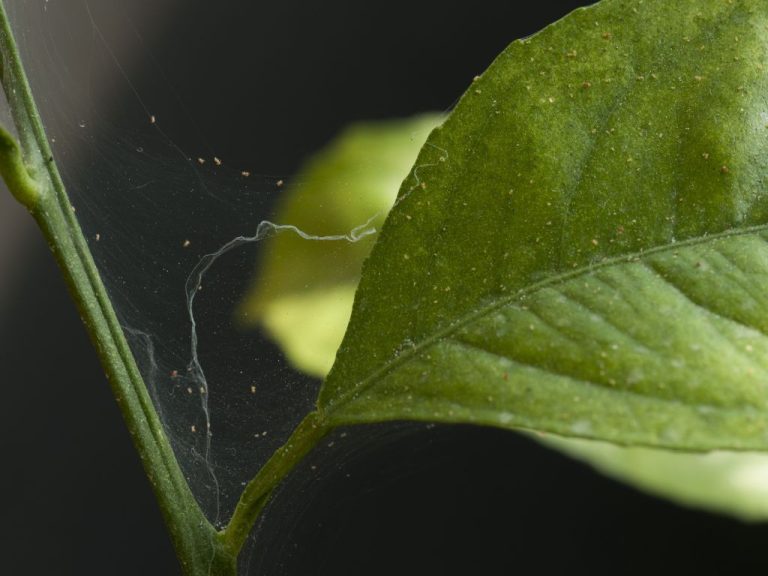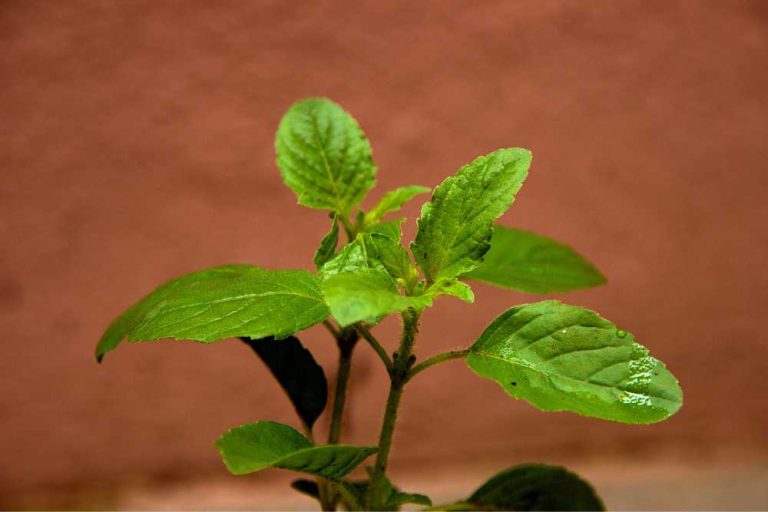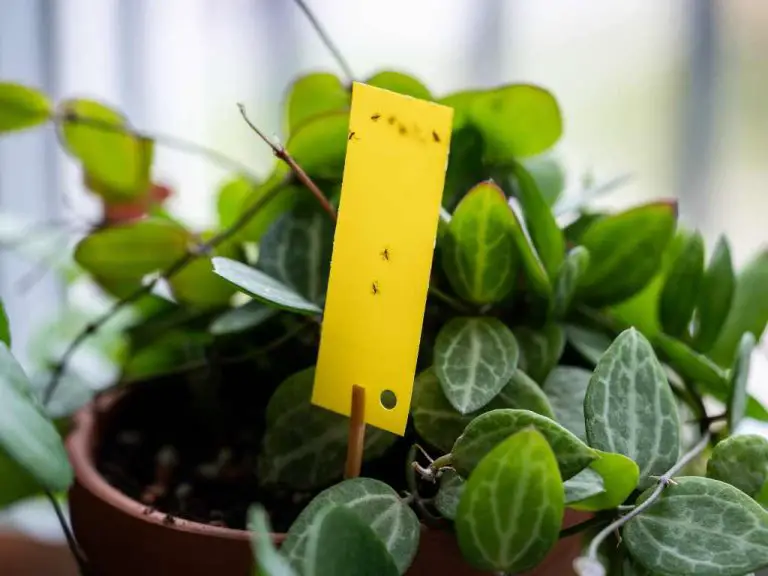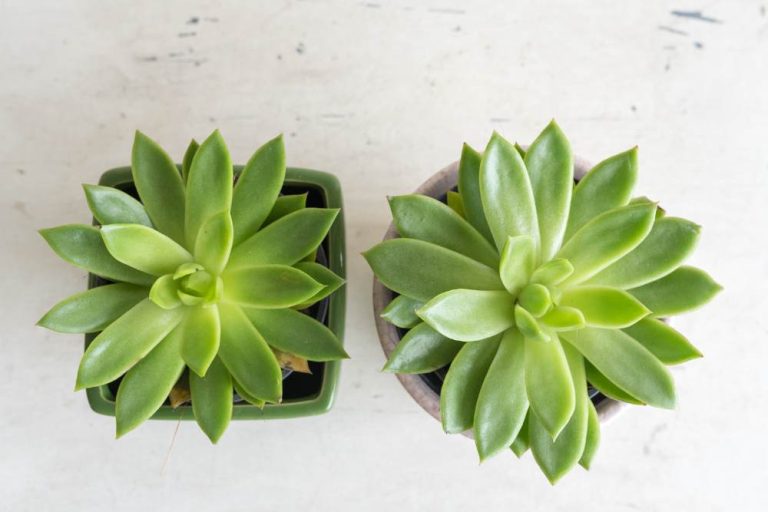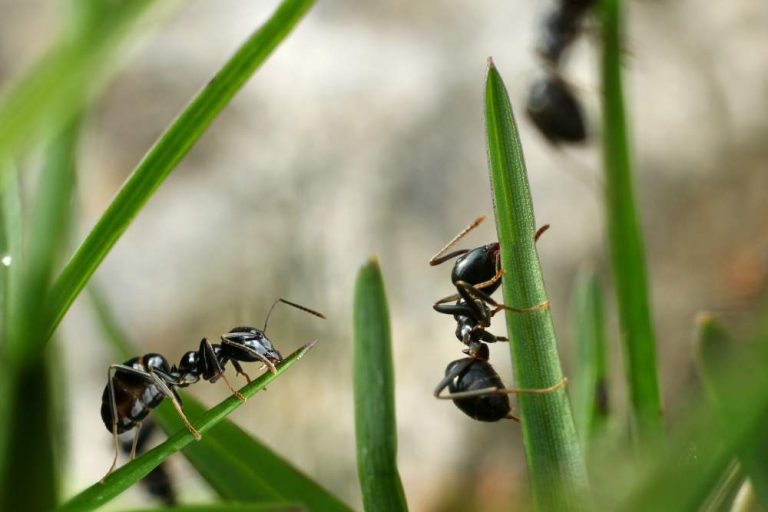Cutworms: Identification, Prevention, and Control
Cutworm is a general term referring to the larval stage/caterpillars of many different moths that live in the soil and tend to feed at the base of plant stems.
What does a cutworm look like: Cutworms have a similar appearance. When completely grown, they are smooth with little hairs and roughly two inches long. When they are disturbed, they often curl into a tight ‘C’ form. Different species can differ in appearance and color, ranging from brown or tan to pink, green, gray, and black.
Some cutworms are all the same color, while others are spotted or striped. Some larvae are dull, while others are shiny or glossy.
Characteristics of different cutworm larvae:
- A black cutworm is a cutworm with gray to dark brown on top with pale lengthwise stripes. It has an overall greasy appearance and numerous tiny, black, rounded, pebble-like bumps.
- Granulate cutworm has brownish to dark gray with black specks.
- Glassy cutworm has a shiny, pale green to gray or whitish body with a brown head.
- Variegated cutworm has a dark gray body with a light stripe on the side and small yellow to orange spots on top of the abdomen.
Adult cutworm moths have dark gray or brown front wings with irregular spots or bands and pale hind wings. Females lay hundreds of white eggs, either in clusters or singly. Eggs are laid on stems or leaves close to the ground. Young larvae feed on the surfaces of leaves after hatching. Older larvae drop to the ground and tunnel into the soil during the day, emerging at night to eat. Larvae are nocturnal.
Cutworms Life Cycle
The number of annual generations varies according to the weather. The egg starts out being white but eventually turns brown. It is virtually spherical in shape, 0.43 to 0.50 mm high, and 0.51 to 0.58 mm broad, with a slightly flattened base.
The egg has 35 to 40 ribs that extend outward from the tip and alternate between being long and short in length. Normally, the eggs are laid in groups on vegetation. A female may lay 1200–1900 eggs. The egg stage lasts for three to six days.
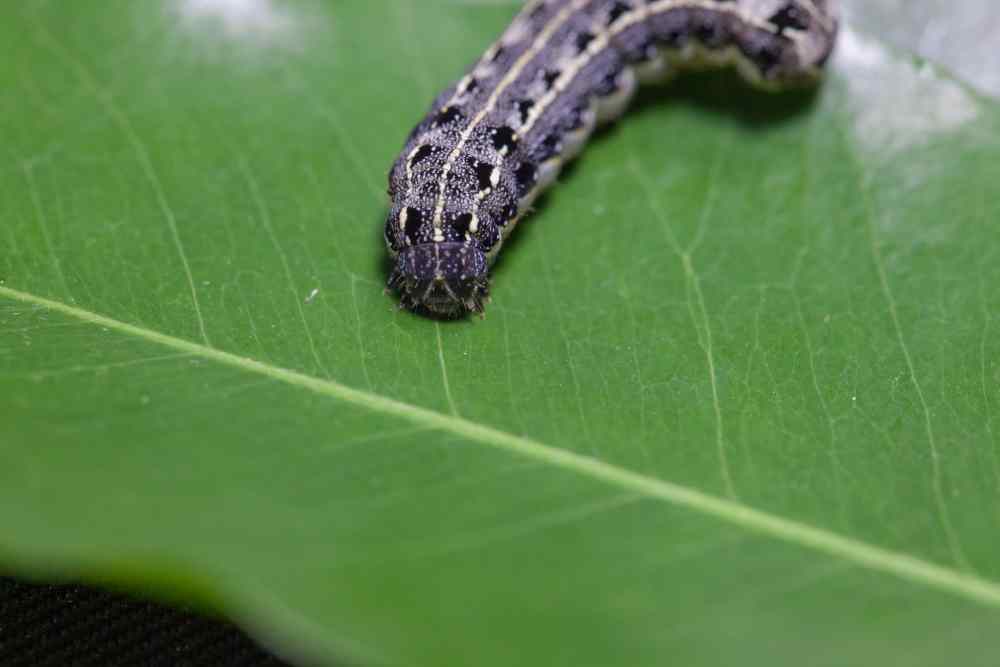
Young caterpillars have a blackish head and are pale, yellowish-green in color. Older caterpillars have a fat body and slick, greasy-looking skin. Their colors range from grey, and dark green, to brown or black. Caterpillars are 4 to 5 cm long when fully developed. Caterpillars that have just emerged eat the leaves first, then move on to the stems.
Older caterpillars eat underground stems or roots or at the base of plants. They are nocturnal, and during the day they hide in the ground or beneath rocks and other plant debris. They ascend to the soil’s surface at night to feed. Near the host plant, caterpillars dig tunnels or burrows in the ground that are 2.5 to 5 cm deep. They develop into pupae in a soil-based earthen cell.
With two dark spines at the tip of the abdomen, the pupa is around 1.7 to 2.5 cm long, smooth, and shiny reddish-brown. Just before the cutworm moth emerges, they are nearly black in color. The adult cutworm moth is a medium-sized insect with a wingspan of 4 to 4.5 cm and a length of around 2 cm.
The lateral margins of the forewings’ greyish-brown forewings are marked with black lines or kidney-shaped patterns. The veins and edges of the hindwings’ pearly white bodies are dark brownish. At night, they are active. Under warm temperatures, the life cycle can be completed in six weeks.
Cutworm Damage
Crops should be checked from emergence to establishment. Normally cutworm damages close to the soil surface/by chewing the leaves that touches the ground. During the daytime, cutworms are usually found just below the soil or under dirt clods, therefore, most of the feeding occurs at night. They hide under clods of soil or bury themselves in the soil during the day.
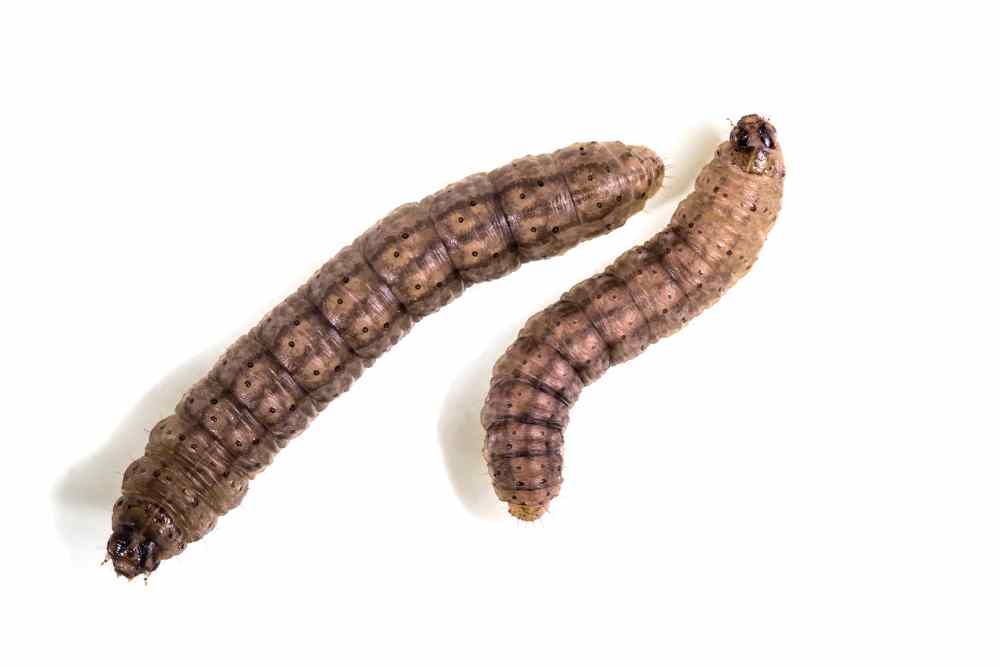
Scratch the soil around recently damaged plants and healthy neighboring plants to expose hidden larvae. They cut off seedlings and young plants just below the ground level. Cutworm damages are severe in fields that were recently thinned or that were direct seeded to a stand to eliminate the need for thinning. Damages are worst when large numbers of cutworms are present in the field before planting.
What do cutworms eat: Cutworms are general feeders that can feed on a variety of plants. They damage in the seedling stage of almost all vegetable crops; Asparagus, beans, cabbage and other crucifers, carrots, celery, corn, lettuce, peas, peppers, potatoes, tomatoes, brassicas, broccoli, cantaloupe, collards, cucumber, eggplant, radish, rhubarb, spinach, squash, sweet potato, okra, onion, and watermelon, plus tree fruits, and small fruits. A few species consume turfgrass.
Cutworms feed by curling their bodies around the stem. This feeding results in the plant being severed just above the soil surface. The number of cutworms discovered varies greatly from year to year. When their numbers are high, they can do significant harm to a garden. Black, bronzed, and army cutworms can inflict severe damage by attacking and cutting fresh plants every night.
How To Get Rid Of Cutworm
When cutworms are most active, late in the day or at night, monitor crops. Inspect the crop for spotty regions or thinning. In cereals and canola, thresholds of two or more caterpillars per 0.5 m of the row may warrant the use of registered insecticides. Insecticides work well to control cutworms; if at all possible, use them when the worms are active, late in the day, or at night.
Fungal diseases and natural predators are helped reduce cutworm populations. The two-toned caterpillar parasite, The orange caterpillar parasite, the orchid dupe, and some spiders all can be used for the suppression of cutworm populations. Natural predators can help cutworm populations decline, but they shouldn’t be the only control method.
When summer weeds provide a food source for them to survive, cutworm damage is worst early in the season. By reducing cutworm numbers, summer weed control may help minimize early-season attacks.

At least 10 days before planting: Remove all weeds from field margins, and plow fields to destroy egg-laying sites, food sources, larvae, and pupae. Check for cutworms on weeds near the field edges before seedling emergence or transplanting. Because cutworms often hide during the day, pay close attention to cracks and the area around the crown of plants. If there are a lot of cutworms, use insecticide bait. This regulates most species.
Apply bait after weed clearance and before crop emergence or transplanting because it is more effective when there aren’t many plants present. Check the crop for four or more wilting plants in a row with clipped or partially chopped stems during seedling emergence or right after transplantation. Sift the soil and dig around those stems. Apply insecticide if cutworms are discovered.
When plants are young or small, monitor them once a week or more frequently, depending on how bad the infestation is. As soon as you notice numerous severed plants in a row, spray insecticide on them. The most efficient application is a directed spray at the base of the plants, though a broadcast application might also work.
Spray for cutworms in the late afternoon or evening so that when they emerge in the evening, they will be exposed to the insecticide. Insecticides sprayed earlier in the day may not be as successful at controlling cutworms as those applied in the late afternoon or evening because some insecticides degrade when exposed to sunlight.
- 29 Bucket Gardening Ideas for a Lush, Compact Garden - October 30, 2024
- 20+ Chic Boho Bedroom Ideas for a Cozy and Stylish Retreat - June 20, 2024
- 12+ Modern Boho Living Room Ideas to Create a Unique Oasis - June 10, 2024

